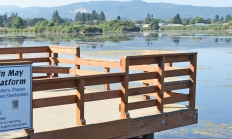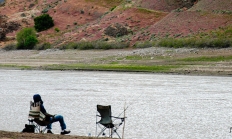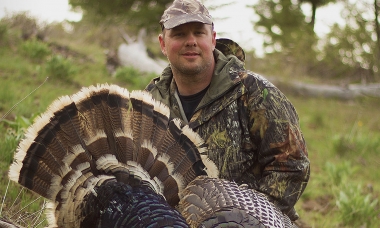
Search myodfw.com
Prineville Reservoir Wildlife Area came under the shared management of the Oregon Department of Fish and Wildlife & United States Bureau of Reclamation in 1962. It is managed for the protection and enhancement of wildlife habitat, big game winter range, improving riparian wetlands, and to promote wildlife stewardship. Goals of the PRWA include creating recreational opportunities for viewing and enjoying wildlife, including mule deer, bald eagles, and a variety of waterfowl. Boating, hiking, and camping are a few popular activities permitted in the wildlife management area. Hunting and fishing opportunities are also available within Prineville Reservoir Wildlife Area, as regulated
Bonneville Hatchery was constructed in 1909. In 1957, the facility was remodeled and expanded as part of the Columbia River Fisheries Development Program (Mitchell Act)—a program to enhance declining fish runs in the Columbia River Basin. The hatchery underwent another renovation in 1974 as part of the U.S. Army Corps of Engineers' (USACE) mitigation of fish losses from the construction of the John Day Dam. In 1998, construction was completed on the Captive Broodstock Facility for the Grande Ronde Basin spring Chinook supplementation program.








When it comes to turkey hunting from a ground blind, popup blinds are ideal. Popup blinds set up in minutes and are easy to move around. You also can construct a blind from natural materials, but it’s time consuming and you can’t take the blind with you to your next hunting location. The best blind for you One-person popup blinds are small and portable, but there’s not much room to move. Unless a bird approaches and stops directly in front of you, you may not get a shot. The best blind for most turkey hunters is a larger, two-person, 360º


Turkeys are some of the best tasting game birds we hunt. The key to eliminating any “gaminess” in the meat is to take proper care of it in the field. After your shot, you’ll want to field dress your bird as quickly as possible. The goal is to cool the bird down by removing its internal organs and allowing air to circulate in the body cavity. Gutting a turkey All you need to gut a turkey is a simple pocket knife. Cut through the thin skin of the stomach from the bottom of the breastbone to the anus. Keep your


Turkey hunting is one of the fastest growing kinds of hunting in Oregon, and nationwide, for many reasons.


Updated November 5, 2025 Subscribe for updates Starting Jan. 1, 2026, an Ocean Endorsement is needed for most recreational anglers fishing in the ocean. Check the Ocean Endorsement page for more information. Ocean Endorsement
Oregon requires all hunters under the age of 18 to complete a hunter safety education course before hunting in the state. Upon course completion, students will receive a temporary Hunter Safety certification card to be carried while hunting in Oregon until a permanent card is received in the mail to replace it. Hunters over 18 are encouraged to take the online education course, as it may be required for out of state hunts. Note: Youth under the age of 9 may struggle with the course material and may not have the physical strength needed to safely handle a firearm during
